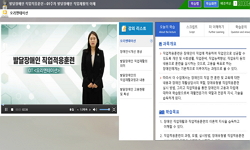본 연구는 직업훈련 참여를 위한 지역이동에 주목하여, 어떠한 요인들이 이에영향을 미치는지 분석하였다. 분석모형의 변수는 개인특성, 훈련특성, 지역특성으로 크게 구분하였으며, 주요 ...
http://chineseinput.net/에서 pinyin(병음)방식으로 중국어를 변환할 수 있습니다.
변환된 중국어를 복사하여 사용하시면 됩니다.
- 中文 을 입력하시려면 zhongwen을 입력하시고 space를누르시면됩니다.
- 北京 을 입력하시려면 beijing을 입력하시고 space를 누르시면 됩니다.

실업자직업훈련을 위한 지역이동 결정요인 분석: 비수도권 거주자 이동을 중심으로 = Analysis of the Determinants of Regional Mobility for Vocational Training for Unemployed Persons: Focus on the Movement of Non-Capital Region Residents
한글로보기https://www.riss.kr/link?id=A109016365
- 저자
- 발행기관
- 학술지명
- 권호사항
-
발행연도
2024
-
작성언어
Korean
- 주제어
-
등재정보
KCI등재
-
자료형태
학술저널
- 발행기관 URL
-
수록면
1-30(30쪽)
- 제공처
- 소장기관
-
0
상세조회 -
0
다운로드
부가정보
국문 초록 (Abstract)
본 연구는 직업훈련 참여를 위한 지역이동에 주목하여, 어떠한 요인들이 이에영향을 미치는지 분석하였다. 분석모형의 변수는 개인특성, 훈련특성, 지역특성으로 크게 구분하였으며, 주요 연구결과는 다음과 같다. 첫째, 개인특성의 주요결과를 살펴보면, 여성, 고령자일 경우 이동할 확률이 낮은 것으로 나타났으며, 고학력일수록 훈련참가를 위해 이동할 확률이 높은 것으로 나타났다. 둘째, 훈련특성의주요결과를 살펴보면, 거주지의 선택가능한 훈련의 질(평균 시간당 지원 훈련비) 이 높을수록 훈련생이 거주지역에서 타 지역으로 이동하려는 확률을 낮추려는 것으로 나타났다. 셋째, 지역특성의 주요결과를 살펴보면, 거주지역의 훈련서비스(훈련기관의 수, 훈련직종의 수)와 취업환경(직종별 구인율)이 양호할수록 이동확률을 전반적으로 낮추는 것으로 나타났다. 넷째, 거주지역의 종사자 기준 제조업비율과 정보통신업 비율이 높을수록 이동확률을 낮추며, 제조업은 비수도권 이동에, 정보통신업은 수도권 이동에 주로 영향을 미치는 것으로 나타났다.
다국어 초록 (Multilingual Abstract)
This study examines which factors influence regional mobility for vocational training participation. The variables in the analytical model were broadly divided into personal characteristics, training characteristics, and regional characteristics. The ...
This study examines which factors influence regional mobility for vocational training participation. The variables in the analytical model were broadly divided into personal characteristics, training characteristics, and regional characteristics.
The key findings are as follows. First, women and older individuals are not more likely to move, and better-educated persons are more likely to move for training participation purposes. Second, the quality of training options available in the residence area (average hourly training subsidy, training quota) appeared to reduce the willingness of trainees to move. Third, better training services (number of training institutions, number of training occupations) and employment environments (hiring rate by occupation) in the residence area generally decreased the probability of moving. Fourth, a higher proportion of manufacturing and information and communication workers in the residence area lowered the mobility rate, with manufacturing affecting movement within non-capital regions, and information and communication influencing movement to the capital region.
동일학술지(권/호) 다른 논문
-
사회자본 관점에서 본 경력단절여성의 조직화에 대한 질적 연구
- 한국직업능력연구원
- 안재희
- 2024
- KCI등재
-
대학생의 진로장벽 인식이 행복감에 미치는 시계열 효과 분석
- 한국직업능력연구원
- 곽수란
- 2024
- KCI등재
-
대학 졸업 청년층 취업자의 직업적응에 대한 잠재프로파일 유형 분류와 대학에서 경험한 진로 및 취·창업 지원 프로그램의 영향 분석
- 한국직업능력연구원
- 김수란
- 2024
- KCI등재
-
랜덤포레스트를 활용한 특성화고 학생의 졸업 후 진로결정 예측요인 탐색
- 한국직업능력연구원
- 김하정
- 2024
- KCI등재




 KCI
KCI



